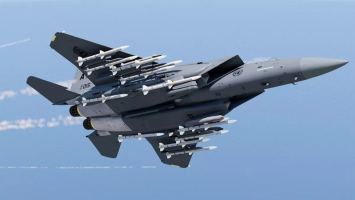Top 10 Most Expensive Military Weapons In The USA
The U.S. military has by far the best financial support of any military in the world. In 2021, the federal government spent $754.8 billion on the armed forces, ... read more...or about 11% of the entire budget. Even though active-duty members are paid a large portion of this money, $250 billion went toward the creation and acquisition of weapons systems. The American military invests billions annually on new aircraft, submarines, missile systems, and other equipment. In order to put this into perspective, it should be noted that the American military has aircraft, ships, and submarines that collectively cost more to design and construct than the total military budget of practically every other country. Here are the most expensive military weapons in the USA.
-
The Ohio-class ballistic missile submarines in the US Navy will be replaced by a new class of nuclear submarines called the Columbia-class submarine. The first submarine's construction started formally on October 1st, 2020, and it will go into service in 2031. The Navy stated on June 3, 2022, that this first vessel will be known as the USS District of Columbia (SSBN-826) in honor of the existing attack submarine USS Columbia (SSN-771). The Navy made no mention of whether the class's name would likewise change.
The Ohio class of UGM-133 Trident II-armed ballistic missile submarines, of which one will be decommissioned each year starting in 2027, will be replaced by the Columbia class. The strategic nuclear force of the United States will no longer have a submerged presence thanks to the Columbia class. The new class was created by Electric Boat with assistance from Newport News Shipbuilding. There will be a total of 12 submarines built, with work on the initial vessel set to start in 2021. Each of the 16 missile tubes on each submarine will be able to launch a single Trident II D5LE missile. The submarines will be 560 feet (170.7 m) long, 43 feet (13.1 m) in diameter, and 1 foot (30 cm) longer than the Ohio-class design.
The SSBN design has some of the following features, however, they are still under development. 42-year anticipated service life (it is planned that each submarine will carry out 124 deterrent patrols during its service life). Unlike the Ohio-class submarines, which need nuclear refueling in the middle of their service lives, this submarine has a life-of-the-ship nuclear fuel core that is enough to power it for the duration of its anticipated service life. The diameter of the missile launch tubes is the same as that of the Ohio class, at 87 inches (2,200 mm), and the length is long enough to hold a D-5 Trident II missile. On submarines of the Ohio class, there are 16 instead of 24 missile launch tubes. The SSBN is planned to have roughly the same submerged displacement as Ohio-class submarines, albeit having fewer launch tubes than those submarines. The U.S. Navy has further emphasized that in order to maintain their survivability throughout the course of their 40-year lifespan, SSBNs must be equipped with the most modern capabilities and stealth due to the special requirements of strategic relevance.
Cost per unit: $4.5 billion
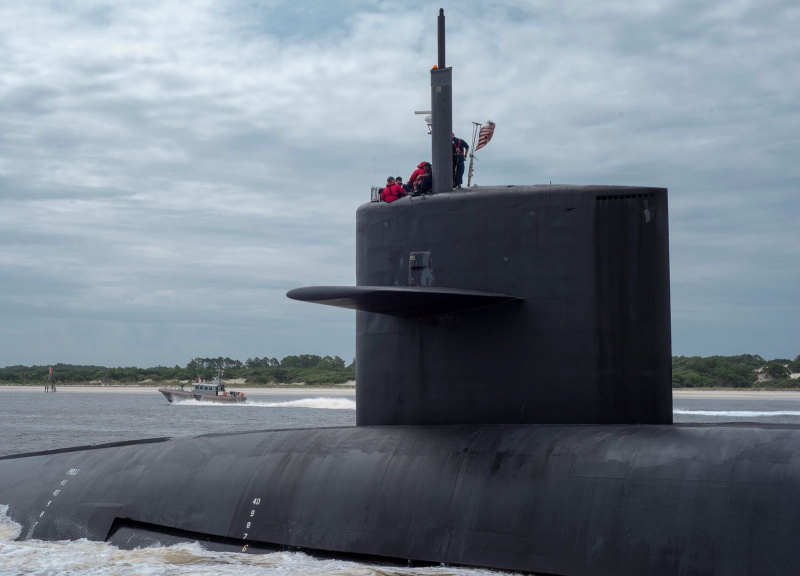
Source: nationalinterest 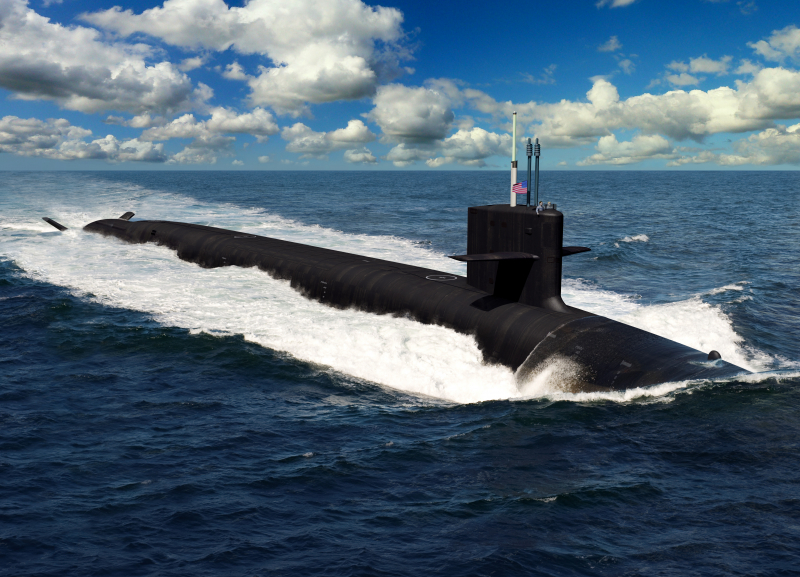
Source: wikipedia -
The Virginia class submarine often referred to as the SSN-774 class, which is a subclass of nuclear-powered fast-attack cruise missile submarines used by the US Navy, ranks 2nd on this list of the most expensive military weapons in the USA. The Virginia class submarine, the newest submarine model for the US Navy, was created by General Dynamics Electric Boat and Huntington Ingalls Industries and features the most recent in stealth, intelligence gathering, and weapons systems technology. Submarines of the Virginia class are built for a variety of open-ocean and littoral tasks, such as anti-submarine warfare and intelligence gathering. These older Los Angeles-class submarines, several of which have already been decommissioned, are intended to be replaced by them. Submarines of the Virginia-class will be purchased through 2043 and are anticipated to stay in service until at least 2060, with further submarines anticipating service well into the 2070s.
Since FY1998, the Navy has purchased 36 Virginia (SSN-774) class nuclear-powered assault submarines (SSNs), and this number will continue to rise through FY2022. Virginia-class boats have been purchased at a pace of two per year since FY2011. Virginia-class boats are being purchased through a multiyear procurement (MYP) contract and are scheduled for acquisition in FY2019–FY2023. Since FY1998, the Virginia-class design has undergone numerous updates. The Virginia Payload Module (VPM), an additional, 84-foot-long mid-body section outfitted with four large-diameter, vertical launch tubes for storing and launching additional Tomahawk missiles or other payloads, will be installed on the majority of Virginia-class boats ordered in FY2019 and subsequent years. VPM-equipped Virginia-class SSNs have an estimated acquisition cost of roughly $3.6 billion per boat when purchased at a rate of two vessels annually. The 37th and 38th Virginia-class boats are wanted by the Navy, and they are requested in the budget proposal. The anticipated total cost of the two vessels' acquisition is $7,250.6 million, or almost $7.3 billion.
Cost per unit: $3.6 billion
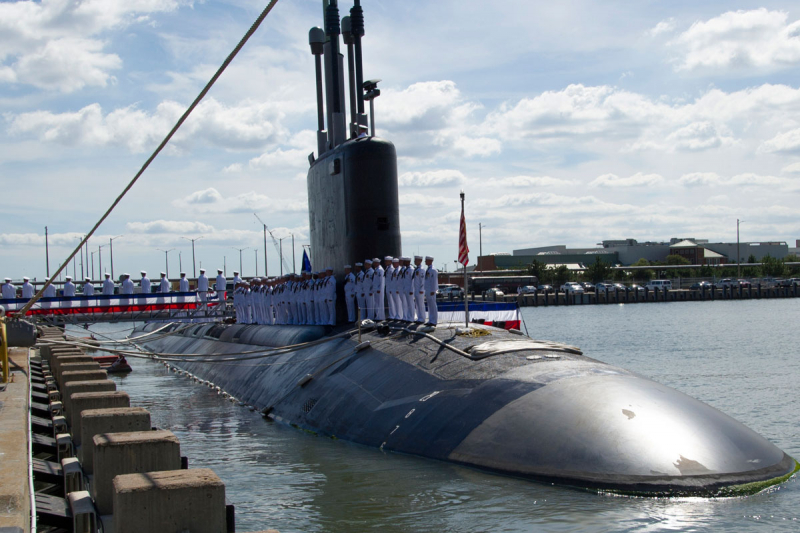
Source: military.com 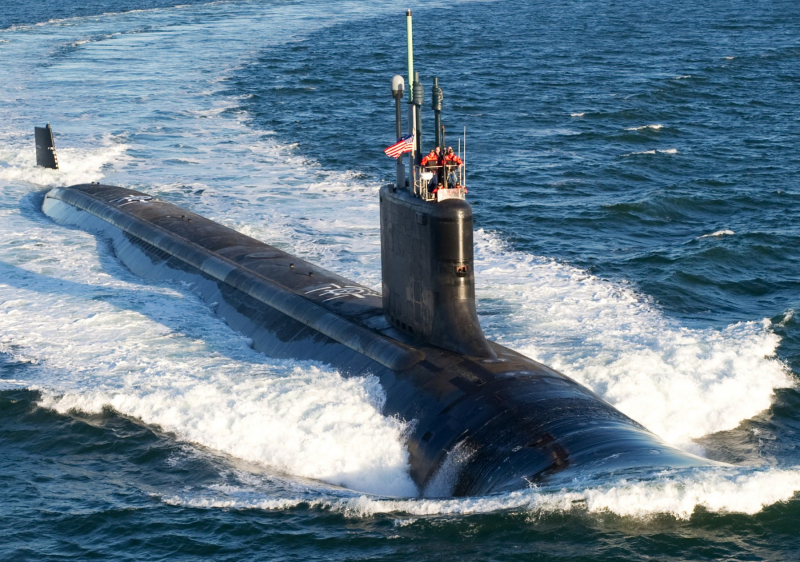
Source: seaforces -
The United States Navy is currently building a class of nuclear-powered aircraft carriers known as the Gerald R. Ford class. The class, which is expected to consist of 10 ships, would eventually replace the present Nimitz-class carriers in a one-for-one replacement of the Navy's carriers, commencing with the lead ship, Gerald R. Ford, which will replace Enterprise (CVN-65). The new ships have a hull that is similar to the Nimitz-class but add technologies that have since been developed with the CVN(X)/CVN-21 program, such as the Electromagnetic Aircraft Launch System (EMALS), along with other design elements that are meant to increase efficiency and lower operating costs, such as sailing with smaller crews. Former US President Gerald R. Ford is honored with the name of this class of aircraft carriers. The class's first ship, CVN-78, was ordered in 2008 and put into service on July 22, 2017. John F. Kennedy (CVN-79), the second ship in the class, is scheduled to enter service in 2024.
The first ship in the class, CVN-78 Gerald R. Ford, saw its construction formally start on August 11, 2005, when Northrop Grumman staged a ceremonial steel cut for a 15-ton plate that would be a section of the carrier's side shell unit. However, actual work didn't start until early 2007. The carrier was manufactured at Newport News Shipbuilding, a branch of Huntington Ingalls Industries in Newport News, Virginia. The only shipyard in the US capable of producing nuclear-powered aircraft carriers is this one. Gerald R. Ford was predicted to cost at least $13 billion in 2005: $8 billion for construction and $5 billion for research and development. The estimate was increased to $14 billion in a 2009 report, which also included $9 billion for construction. The Center for New American Security estimated that a carrier strike group's life-cycle cost per operating day (including aircraft) was $6.5 million in 2013.
Three carriers in all were initially approved for construction, but if the Enterprise and Nimitz-class carriers were to be replaced one for one, 11 carriers would be needed during the course of the program. In 2058, the final aircraft carrier of the Nimitz class will be retired. Defense Secretary Robert Gates declared in a speech on April 6, 2009, that each Gerald R. Ford-class carrier would be constructed over a five-year period, resulting in a "more economically sustainable course" and a 10-carrier fleet by 2040. When Navy Secretary Ray Mabus approved a force structure assessment in December 2016 that called for a 355-ship fleet with 12 aircraft carriers, things changed. If adopted, this policy would mandate that each carrier of the Gerald R. Ford class be constructed within three to four years.
Cost per unit: $2.8 billion
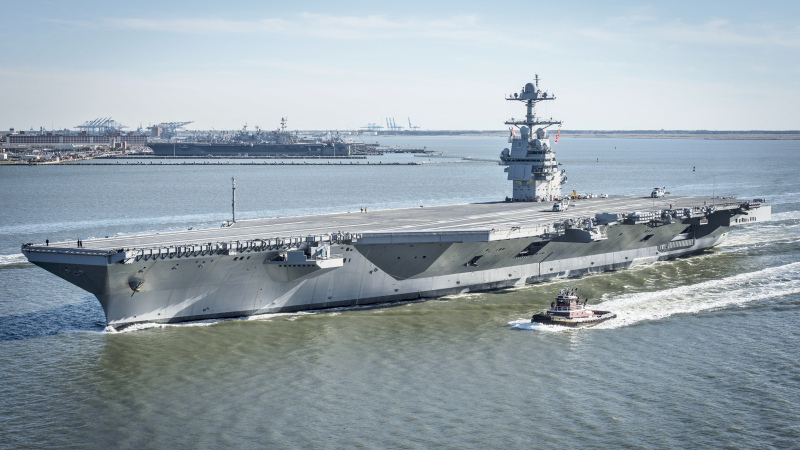
Source: wikipedia 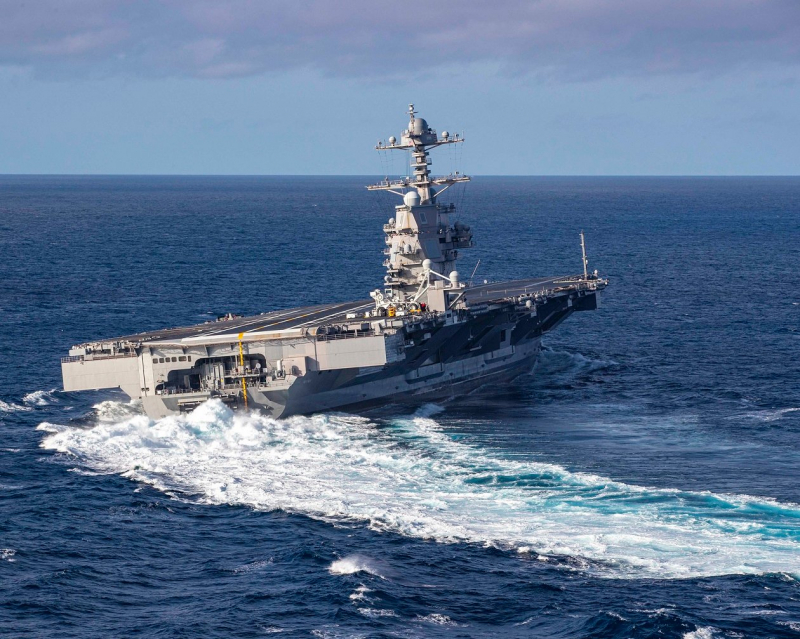
Source: nationalinterest -
The Arleigh Burke class of guided missile destroyers (DDGs) is a line of destroyers designed for the United States Navy and centered on the SPY-1D multifunction passive electronically scanned array radar and the Aegis Combat System. Admiral Arleigh Burke, an American destroyer officer in World War II who later served as Chief of Naval Operations, is honored by having his class bear his name. While Admiral Burke was still alive, the lead ship, USS Arleigh Burke, was put into service.
These warships were created as multi-mission destroyers, equipped with Tomahawk missiles for strategic land strikes, powerful Aegis radar and surface-to-air missiles for anti-aircraft warfare, and anti-submarine rockets and helicopters for anti-submarine warfare, and Harpoon missile launchers for anti-surface warfare. Ships of this class have also started to show some promise as mobile anti-ballistic missile and anti-satellite weaponry platforms, operating on 15 ships as of March 2009. Towed sonar and the Harpoon missile launcher are no longer included in some classes of the ship. Their superstructure and hull were built with a smaller radar cross-section in mind.
On July 4th, 1991, the first ship in the class was put into service. Prior to the Zumwalt class being operational in 2016, the Arleigh Burke-class ships were the only active destroyers in the U.S. Navy with the decommissioning of the final Spruance-class ship, USS Cushing, on September 21, 2005. The Arleigh Burke-class of US Navy surface combatants has had the longest production run since World War II. By May 2022, 70 of the class's initial 75 ships consisting of 21 Flight I, 7 Flight II, 34 Flight IIA, 3 Flight IIA Restart, and 10 Flight IIA Technology Insertion were in service. There are now 14 Flight III ships planned, but another 28 are anticipated, for a total of 42 in that flight and 117 ships overall for the class. The Arleigh Burke-class guided-missile cruisers are larger and more strongly armed than the majority of earlier guided missile cruisers, with an overall length of 505 to 509.5 feet (153.9 to 155.3 m), displacement ranging from 8,230 to 9,700 tons, and weaponry including over 90 missiles.Cost per unit: $1.9 billion
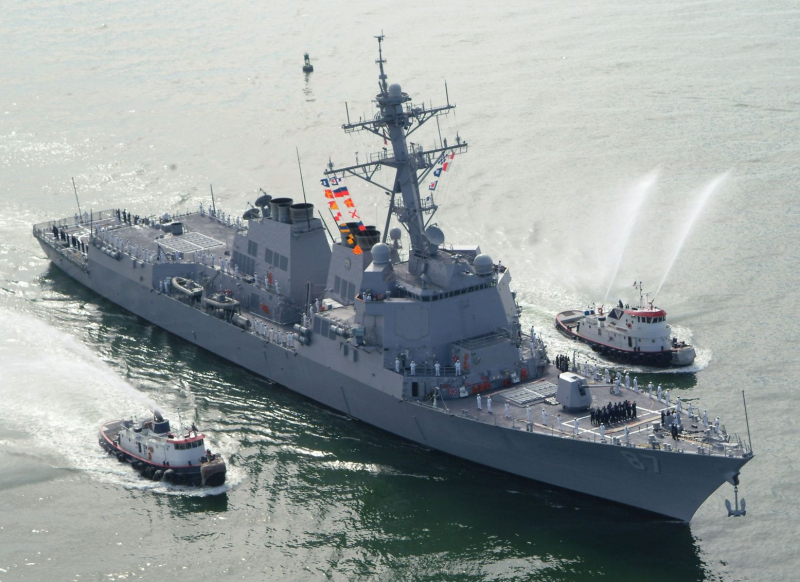
Source: wikipedia 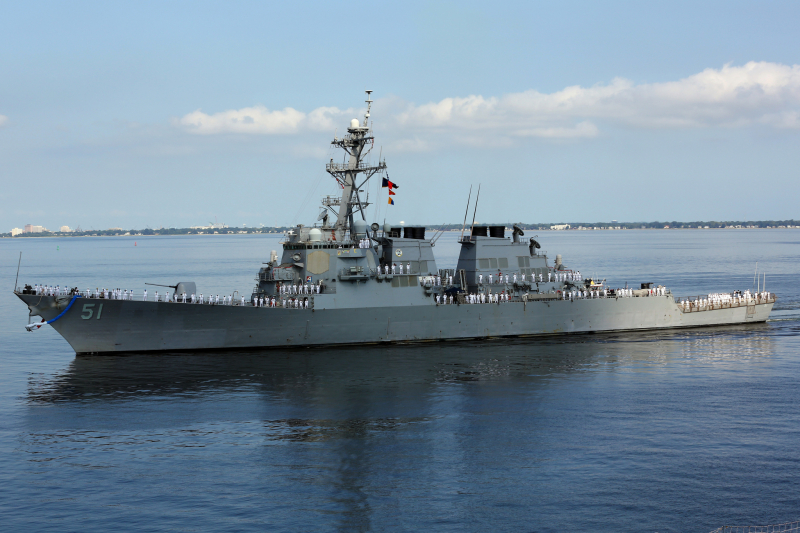
Source: navalpost -
The United States Navy uses a class of amphibious transport docks known as the San Antonio class, sometimes known as a "landing platform, dock" (LPD). The Austin-class LPDs (including the Cleveland and Trenton sub-classes), Newport-class tank landing ships, and Charleston-class amphibious cargo ships are all replaced by these warships. The San Antonio class was initially intended to consist of twelve ships, with an initial target price of $890 million; as constructed, its average cost is now $1.6 billion. The twelfth ship of the San Antonio class was partially funded under the Defense Authorization for Fiscal Year 2015. The U.S. Navy has eleven warships of this class in service as of January 2018, and two more are either being built or have been approved.
The San Antonio class was created to give the Navy and U.S. Marine Corps cutting-edge sea-based platforms that can operate with 21st-century transformational platforms like the MV-22 Osprey, the (since canceled) Expeditionary Fighting Vehicle (EFV), air-cushioned landing craft (LCACs), and future methods of bringing marines ashore. With a displacement of more than 25,000 tons when fully loaded, the ship is more than 45 percent bigger than the Austin class. It can accommodate twice as many vehicles, landing craft, and aircraft but fewer troops.
The San Antonio class boasts advanced computer technology and strong survivability features. The class was created to reduce radar signature in addition to providing Rolling Airframe Missile (RAM) protection from air threats. The ships are more challenging to find and target due to techniques that minimize radar cross-sections (RCS). Improved nuclear blast and fragmentation protection, as well as a shock-hardened structure, are among the aspects that increase survival. The onboard integrated systems are connected by the fiber-optic shipboard wide area network (SWAN). When newer technology becomes available, the network will make "plug and fight" configuration, updating, and replacing devices easier. Additionally, the class is equipped with sophisticated communications, command, control, and intelligence capabilities to support present and future expeditionary warfare missions.
Cost per unit: $1.2 billion
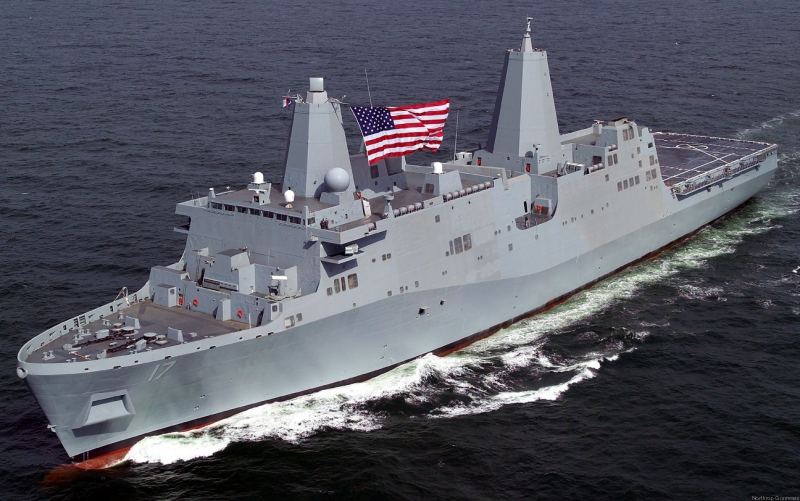
Source: seaforces 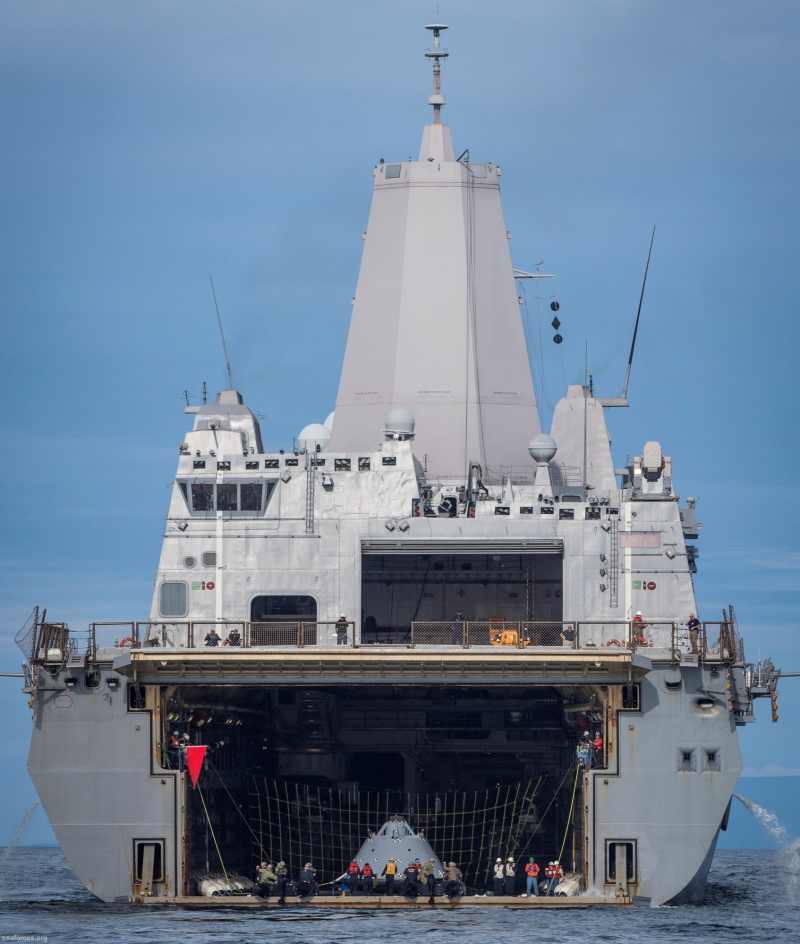
Source: seaforces -
As a successor to the modular littoral combat ship, the Constellation class is a class of multi-mission guided-missile frigates being developed for the US Navy. On July 10, 2017, the US Navy published the FFG(X) frigate project's Request for Information (RFI) in the US Department of Defense. The United States Navy chose five shipbuilders to develop their concepts into a potential design for the twenty FFG(X) guided-missile frigates that were proposed. On April 30, 2020, Fincantieri Marinette Marine made the announcement that its FREMM multipurpose frigate-based design had won the contract. After the lead ship was given a name, the project was later renamed the FFG-62 program.
The first FFG(X) is scheduled to be purchased by the U.S. Navy in 2020, so there was not enough time to create a brand-new design for the platform. The FFG(X) was therefore intended to be a modified version of a "parent" ship design that was already in existence, according to the U.S. Navy. The request for information (RFI) states, "A competition for FFG(X) is envisioned to include current parent designs for a Small Surface Combatant that can be modified to fulfill the unique capability requirements specified by the U.S. Navy."
The U.S. Navy wanted a frigate that could keep up with the carriers and had sensors connected to the rest of the fleet to broaden the group's overall tactical picture. "The FFG(X) will normally aggregate into strike groups and Large Surface Combatant led surface action groups, but also possess the ability to robustly defend itself during the conduct of independent operations while connected and contributing to the fleet tactical grid." The new frigate will carry at least 32 Mark 41 Vertical Launch System cells on board, according to a January 2019 announcement by the U.S. Navy. These cells will be used primarily for anti-air warfare for self-defense or escort missions. The class will utilize a propulsion technology called Combined Diesel Electric and Gas Hull, Mechanical and Electrical (HM&E) that has never been used in a U.S. Navy ship before. In order to lower the danger of engine failure, which plagued the earlier LCS program, the new propulsion system will have to be tested on land.Cost per unit: $1.1 billion
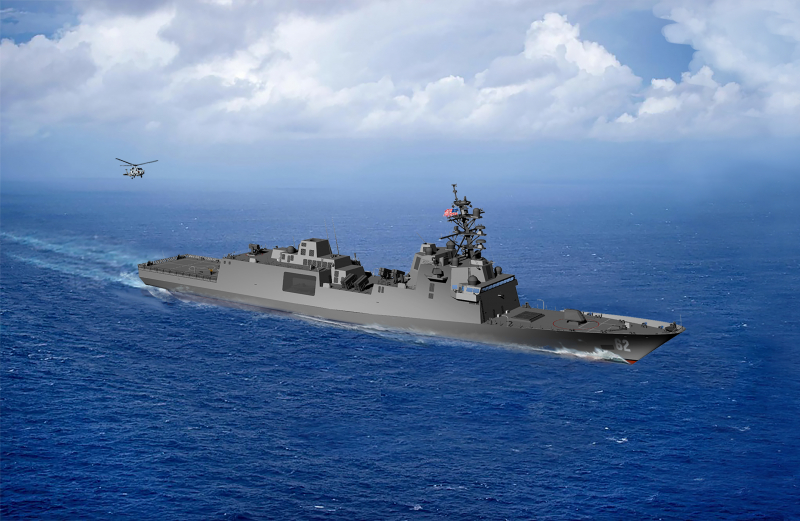
Source: wikipedia 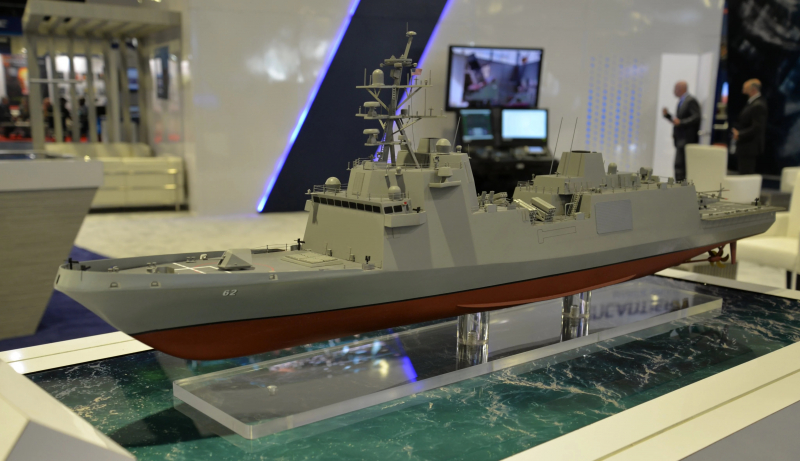
Source: reddit.com -
The first ten GPS III satellites make up GPS Block III, which will be needed to maintain the Navstar Global Positioning System's functionality. The ten Block III satellites and the GPS III Non-Flight Satellite Testbed (GNST) were created, developed, and constructed by Lockheed Martin. In December 2018, the first satellite in the constellation was sent into orbit. In 2023, the tenth and last GPS Block III launch are anticipated. The A2100M satellite bus structure is used by Lockheed Martin's Block III satellites. Orbital ATK creates the pressurant and propellant tanks using composite materials that are both lightweight and highly durable. Eight deployable JIB antennas created and produced by Northrop Grumman Astro Aerospace will be carried by each satellite.
An US$82.7 million firm-fixed-price contract for launch services to send a GPS III satellite to its appropriate orbit was given to SpaceX in Hawthorne, California, on April 27, 2016, after the first satellite's planned 2014 flight had already been considerably postponed. The contract called for work to be done at Hawthorne, California; Cape Canaveral Air Force Station, Florida; and McGregor, Texas, on the launch vehicle production; mission integration; and launch operations for a GPS III mission. The first satellite would launch in the spring of 2018, according to an announcement made by the director of the U.S. Air Force's Global Positioning Systems Directorate in December 2016.
The first GPS III satellite's scheduled March 2018 launch date is in jeopardy due to technical concerns with both the GPS III satellite and the OCX Block 0 launch control and checkout system, according to the General Accounting Office. There were a lot of causes that contributed to the delays, but the navigation payload problems were the main culprits. Additional testing and validation of a SpaceX Falcon 9 were required, which resulted in more launch date delays. The satellite was finally launched on December 23, 2018, despite these delays. The second GPS III satellite was launched onboard a Delta IV on August 22, 2019. The U.S. Air Force exercised a US$395 million contract option with Lockheed Martin on September 21 in order to purchase the ninth and tenth Block III spacecraft, which are planned to be ready for launch by 2022.Cost per unit: $875.5 million
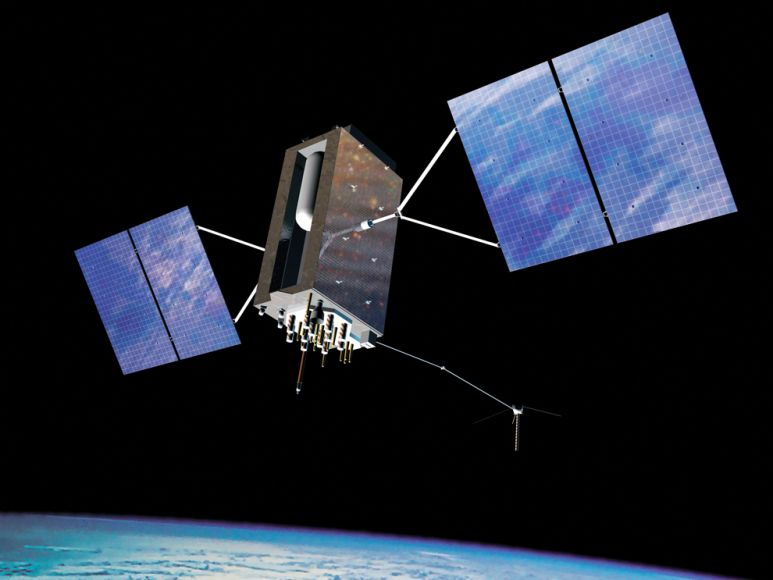
Source: nationalgeographic 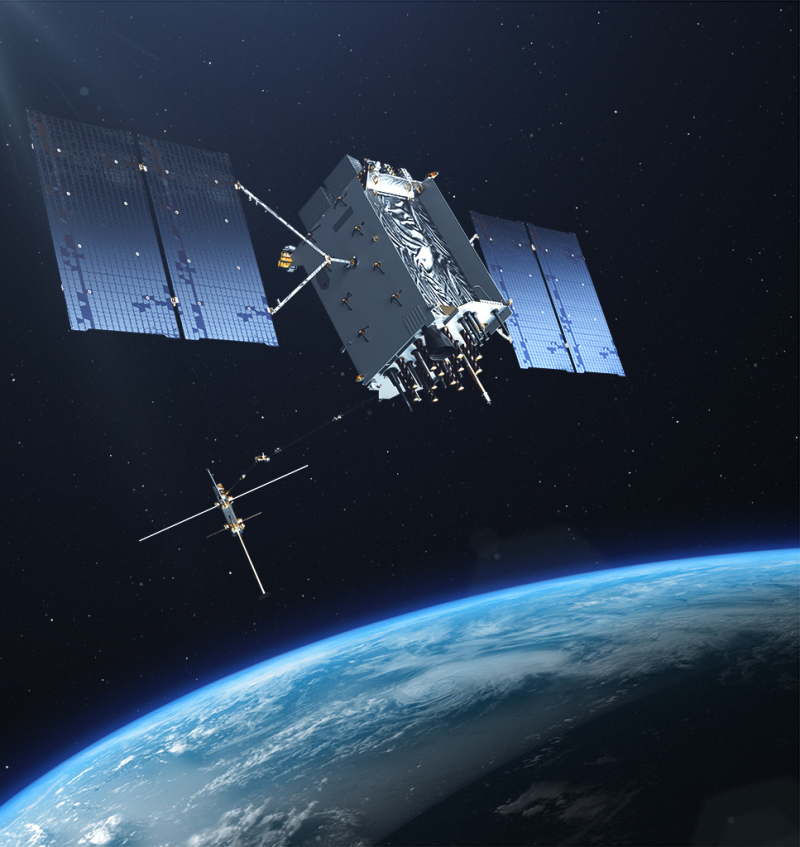
Source: spacenews -
An aircraft for high-altitude, remotely piloted surveillance, the Northrop Grumman RQ-4 Global Hawk. It was initially developed by Ryan Aeronautical and was referred to as Tier II+. Using high-resolution synthetic aperture radar (SAR) and electro-optical/infrared (EO/IR) sensors with prolonged loiter periods over target areas, the RQ-4 offers a comprehensive overview and methodical monitoring. It can cover an area the size of South Korea or Iceland about 40,000 square miles (100,000 km2) of terrain in a single day. The United States Air Force runs the Global Hawk (USAF). It serves as a high-altitude, long-endurance (HALE) platform that supports forces engaged in global military operations by providing a range of intelligence collection capabilities. The USAF claims that the aircraft's increased surveillance capabilities enable more accurate weapon targeting and improved friendly force protection.
Due to cost overruns, the original 63 aircraft acquisition plan was reduced to 45, and in 2013 it was suggested that the 21 Block 30 signals intelligence variants to be put on hold. Each of the first 10 airplanes had a flyaway price of $10 million in the year 1994. This amount increased to US$60.9 million by 2001, and by 2013 it had increased to $131.4 million (flyaway cost). The Global Hawk was transformed into the MQ-4C Triton maritime surveillance platform by the U.S. Navy. To test their maritime surveillance capabilities, the US Navy received two Block 10 aircraft, codenamed N-1 (BuNo 166509) and N-2 (BuNo 166510). Prior to relocating to Naval Air Station Patuxent River in March 2006 for the Global Hawk Maritime Demonstration (GHMD) program, run by Navy squadron VX-20, the initial prototype underwent brief testing at Edwards Air Force Base.
In the US Navy's Broad Area Maritime Surveillance (BAMS) UAV competition, Northrop Grumman submitted an RQ-4B derivative. The Navy awarded a US$1.16 billion contract to Northrop Grumman's RQ-4N on April 22, 2008, according to an announcement. The RQ-4N was formally renamed the MQ-4C in September 2010. The main area where the Navy MQ-4C and Air Force RQ-4 diverge is in their wings. The Triton can soar to 50,000 feet (15,000 meters) in order to see a large region and can descend to 10,000 feet (3,000 meters) in order to further identify a target, whereas the Global Hawk maintains its high altitude while conducting surveillance. The Triton's wings are constructed specifically to withstand the strains of rapidly lowering altitude. The Triton's interior wing construction is substantially stronger and includes extra features including anti-icing capability and impact and lightning strike protection, despite having wings that seem identical to those of the Global Hawk.Cost per unit: $605.9 million
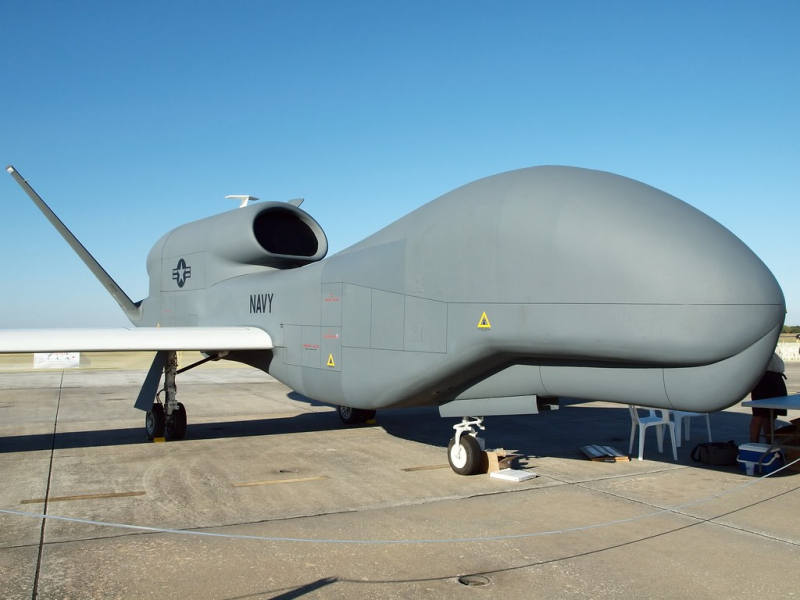
Source: flickr 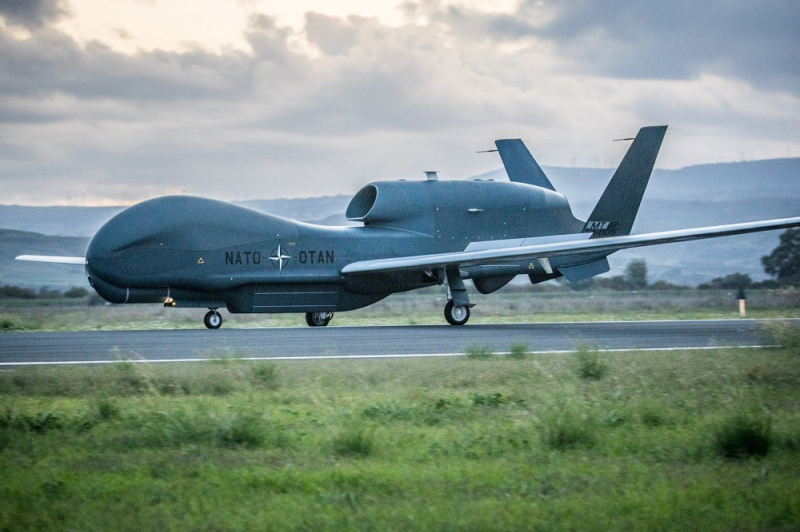
Source: ncia.nato.int -
A program of the United States Space Force (USSF) called National Security Space Launch (NSSL), formerly known as Evolved Expendable Launch Vehicle (EELV) from 1994 to 2019, aims to ensure that the United States Department of Defense and other US government payloads have access to space. This is one of the most expensive military weapons in the USA. The National Reconnaissance Office works in collaboration with the Space and Missile Systems Center SMC, notably the Launch Enterprise Systems Directorate, to oversee the program. The Boeing Delta IV and Lockheed Martin Atlas V EELV families are products of the Evolved Expendable Launch Vehicle launch system program, which was launched in 1994 with the intention of making government space launches more dependable and cheap. Along with the SpaceX Falcon 9 launch vehicle, these launch vehicles were the main means of launching U.S. military satellites as of 2019.
To better represent the expanding commercial launch sector and the evolving nature of launch contracts, including the potential for reusable launch vehicles, the program name was changed from EELV to National Security Space Launch (NSSL) on March 1, 2019. The most expensive military satellites in the country are launched under the NSSL program; contracts to launch lower-value payloads, like those of the Space Test Program, are given using alternative criteria.
The NSSL program's goals are to retain secure access to space, procure reasonably priced National Security Space launch services, and guarantee mission success with strong domestic launch service providers. The program's goal is to give warfighters the launch flexibility they require while utilizing the robust U.S. commercial launch industry, which has experienced rapid growth over the previous five to seven years. The name change from EELV to NSSL was mandated by the 2019 National Defense Authorization Act in order to reflect future bids' inclusion of both reusable and disposable launch vehicles. Since its beginning in 1999, the NSSL/EELV program, which includes more than 100 National Security Space launches in support of the Air Force, the National Reconnaissance Office, and the U.S. Navy, has not experienced a launch failure.Cost per unit: $536.5 million
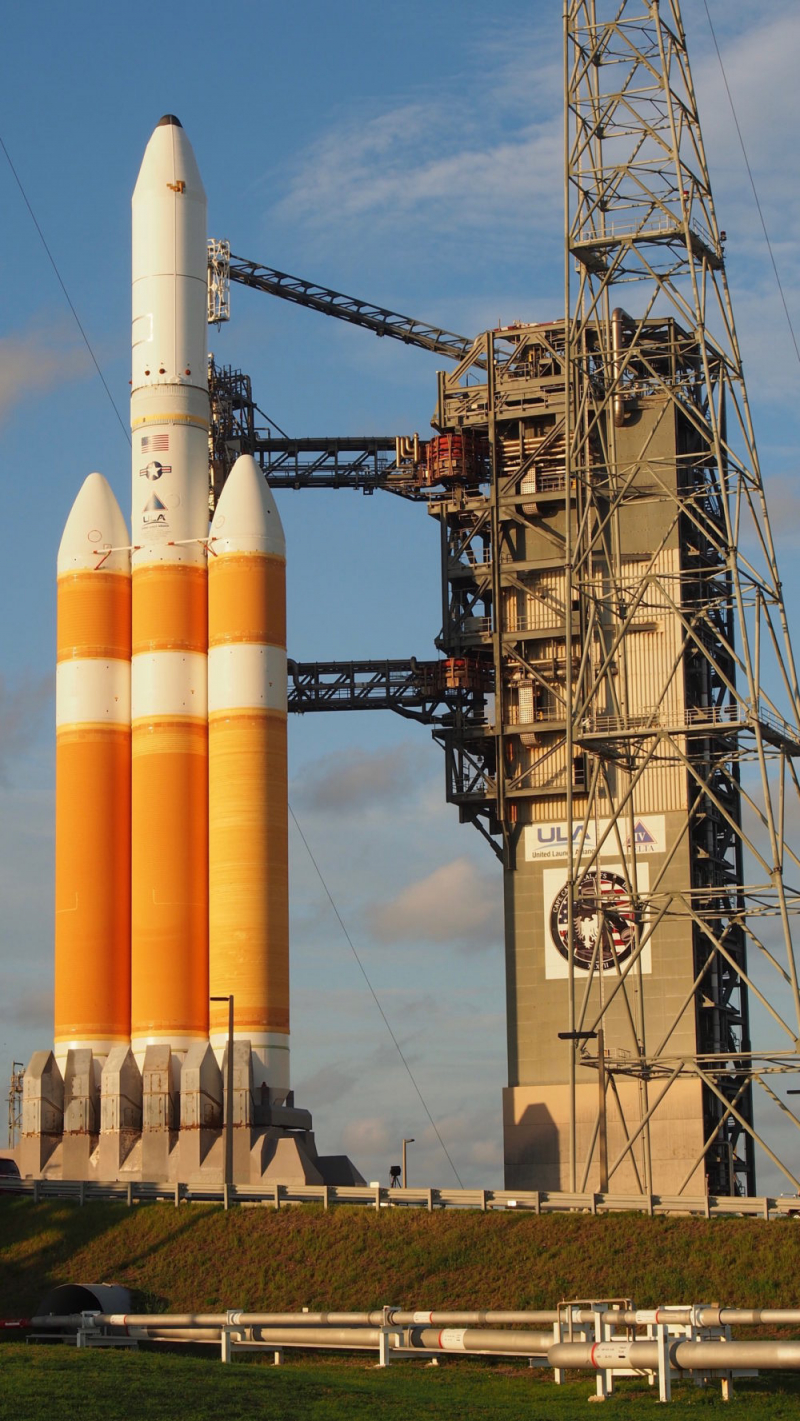
Source: spacenews 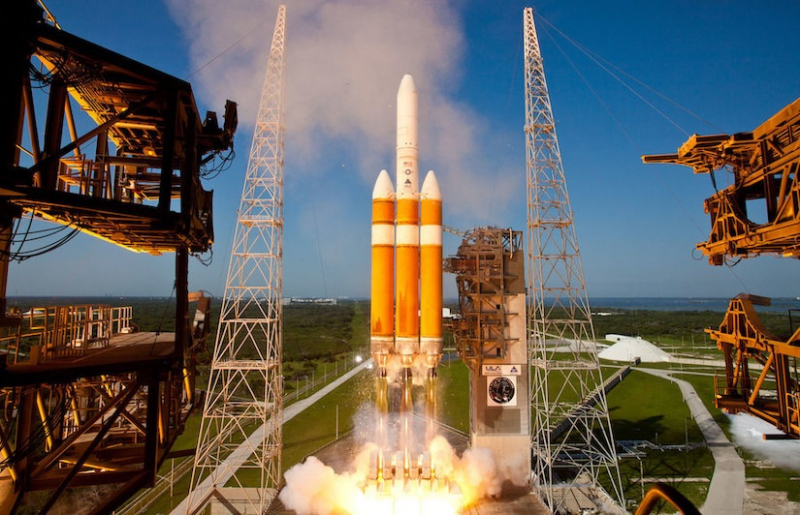
Source: spaceflightnow -
The America class is a group of American Navy landing helicopter assault (LHA) of amphibious assault ships (USN). A Marine Expeditionary Unit can be landed using helicopters, MV-22B Osprey V transport planes, AV-8B Harrier II or F-35 Lightning II fighter jets, and a variety of assault helicopters. The US Navy commissioned the first of these warships in 2014 to replace the USS Peleliu of the Tarawa class; up to eleven will be built. The "Flight 0" ships of the America class will not have well decks and smaller onboard hospitals to allow more space for aviation uses. The design of the America class is modeled on that of USS Makin Island, the final ship of the Wasp-class.
USS America, with a displacement of around 45,000 long tons (46,000 t), is comparable in size to the French Charles de Gaulle and the Indian Vikramaditya fixed-wing aircraft carriers, despite the fact that they only transport helicopters and V/STOL aircraft. Additionally, the USS America class ships have a displacement similar to the old US Navy Midway-class aircraft carriers despite being more than 124 feet (38 m) shorter. In addition to a squadron of jet fighters and numerous versatile helicopters like the MH-60 Seahawk, USS America can be utilized as a small aircraft carrier. The following ships in this class, beginning with USS Bougainville (LHA-8), will feature smaller aircraft hangars to make place for larger amphibious warfare well decks. They can accommodate roughly 20 to 25 AV-8B, F-35B, or a combination of the two.
The LHA-6 building project commenced in December 2008 after the program's development phase began in October 2005. The program was launched in July 2001. On October 28, 2010, a $48.1 million contract for "further planning and advanced engineering services in support of the LHA Replacement Flight 0 amphibious assault ship (LHA 7)" was given to Northrop Grumman Shipbuilding. The contract is expected to last through May 2012. The delivery date was set for 2017. The F-35B program was delayed by two years due to development issues in January 2011, and plans for LHA-7 might change if the F-35B were to be shelved. Huntington Ingalls Industries received Contract N00024-10-C-2229 in April 2012, which included funds for LHA-7's steel plate procurement and a requirement for four more ships (to LHA-10). The U.S. Department of Defense stated on June 13, 2014, that General Dynamics National Steel and Shipbuilding Co., San Diego, California, has been given a contract for LHA-8 design and development work for $23.5 million. Huntington Ingalls received its most recent payment from the U.S. Navy on December 14, 2021, for $70.8 million, which will go toward purchasing long-lead-time components for LHA 9. The Naval Sea Systems Command in Washington, D.C. presented the prize.Cost per unit: $521.8 million
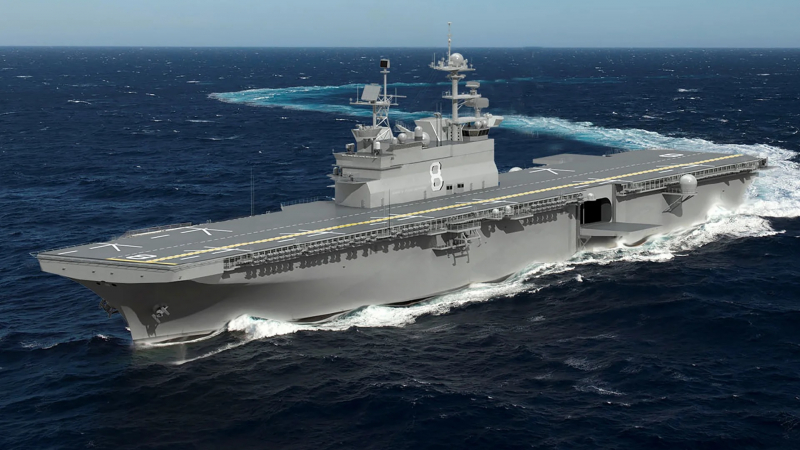
Source: thedrive 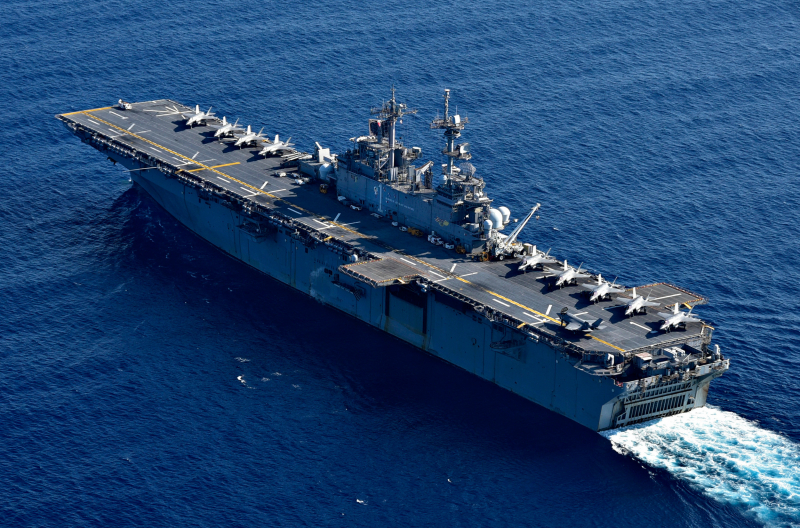
Source: pacom.mil












